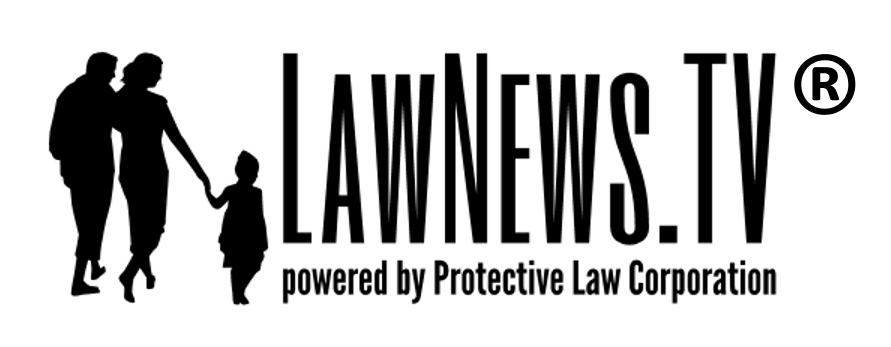In an opinion released today, the US Supreme Court struck down a Maine tuition assistance program assisting parents of kids located in districts without a secondary school to help them send their kids to private school.
However, the program was for “nonsectarian” assistance only, i.e., no assistance if your kid goes to a religious school. Supreme Court no like.
This decision could be used to argue in favor of vouchers for religious schools, or some type of tax credit. (After spending about a quarter million to send our daughter to K-12 Catholic schools, it would be nice if they did something retroactive. Hell, I want reparations now!)
Here is syllabus from the Carson v Makin slip opinion released today:
SUPREME COURT OF THE UNITED STATES
Syllabus
CARSON, AS PARENT AND NEXT FRIEND OF O. C., ET AL. v.
MAKIN
CERTIORARI TO THE UNITED STATES COURT OF APPEALS FOR
THE FIRST CIRCUIT
No. 20–1088. Argued December 8, 2021—Decided June 21, 2022
Maine has enacted a program of tuition assistance for parents who live
in school districts that neither operate a secondary school of their own
nor contract with a particular school in another district. Under that
program, parents designate the secondary school they would like their
child to attend, and the school district transmits payments to that
school to help defray the costs of tuition. Participating private schools
must meet certain requirements to be eligible to receive tuition payments, including either accreditation from the New England Association of Schools and Colleges (NEASC) or approval from the Maine Department of Education. But they may otherwise differ from Maine
public schools in various ways. Since 1981, however, Maine has limited tuition assistance payments to “nonsectarian” schools.
Petitioners sought tuition assistance to send their children to Bangor Christian Schools (BCS) and Temple Academy. Although both
BCS and Temple Academy are accredited by NEASC, the schools do
not qualify as “nonsectarian” and are thus ineligible to receive tuition
payments under Maine’s tuition assistance program. Petitioners sued
the commissioner of the Maine Department of Education, alleging that
the “nonsectarian” requirement violated the Free Exercise Clause and
the Establishment Clause of the First Amendment, as well as the
Equal Protection Clause of the Fourteenth Amendment. The District
Court rejected petitioners’ constitutional claims and granted judgment
to the commissioner. The First Circuit affirmed.
Held: Maine’s “nonsectarian” requirement for otherwise generally available tuition assistance payments violates the Free Exercise Clause.
Pp. 6–18.
(a) The Free Exercise Clause of the First Amendment protects2 CARSON v. MAKIN
Syllabus
against “indirect coercion or penalties on the free exercise of religion,
not just outright prohibitions.” Lyng v. Northwest Indian Cemetery
Protective Assn., 485 U. S. 439, 450. The Court recently applied this
principle in the context of two state efforts to withhold otherwise available public benefits from religious organizations. In Trinity Lutheran
Church of Columbia, Inc. v. Comer, 582 U. S. ___, the Court considered
a Missouri program that offered grants to qualifying nonprofit organizations that installed cushioning playground surfaces, but denied such
grants to any applicant that was owned or controlled by a church, sect,
or other religious entity. The Court held that the Free Exercise Clause
did not permit Missouri to “expressly discriminate[ ] against otherwise
eligible recipients by disqualifying them from a public benefit solely
because of their religious character.” 582 U. S., at ___–___. And in
Espinoza v. Montana Department of Revenue, 591 U. S. ___, the Court
held that a provision of the Montana Constitution barring government
aid to any school “controlled in whole or in part by any church, sect, or
denomination” violated the Free Exercise Clause by prohibiting families from using otherwise available scholarship funds at religious
schools. 591 U. S., at ___. “A State need not subsidize private education,” the Court concluded, “[b]ut once a State decides to do so, it cannot disqualify some private schools solely because they are religious.”
Id., at ___. Pp. 6–8.
(b) The principles applied in Trinity Lutheran and Espinoza suffice
to resolve this case. Maine offers its citizens a benefit: tuition assistance payments for any family whose school district does not provide
a public secondary school. Just like the wide range of nonprofit organizations eligible to receive playground resurfacing grants in Trinity
Lutheran, a wide range of private schools are eligible to receive Maine
tuition assistance payments here. And like the daycare center in Trinity Lutheran, the religious schools in this case are disqualified from
this generally available benefit “solely because of their religious character.” 582 U. S., at ___. Likewise, in Espinoza, as here, the Court
considered a state benefit program that provided public funds to support tuition payments at private schools and specifically carved out
private religious schools from those eligible to receive such funds. Both
that program and this one disqualify certain private schools from public funding “solely because they are religious.” 591 U. S., at ___. A law
that operates in that manner must be subjected to “the strictest scrutiny.” Id., at ___–___.
Maine’s program cannot survive strict scrutiny. A neutral benefit
program in which public funds flow to religious organizations through
the independent choices of private benefit recipients does not offend
the Establishment Clause. See Zelman v. Simmons-Harris, 536 U. S.
639, 652–653. Maine’s decision to continue excluding religious schools
Cite as: 596 U. S. ____ (2022) 3
Syllabus
from its tuition assistance program after Zelman thus promotes
stricter separation of church and state than the Federal Constitution
requires. But a State’s antiestablishment interest does not justify enactments that exclude some members of the community from an otherwise generally available public benefit because of their religious exercise. Pp. 9–11.
(c) The First Circuit’s attempts to recharacterize the nature of
Maine’s tuition assistance program do not suffice to distinguish this
case from Trinity Lutheran or Espinoza. Pp. 11–18.
(1) The First Circuit held that the “nonsectarian” requirement was
constitutional because the benefit was properly viewed not as tuition
payments to be used at approved private schools but instead as funding for the “rough equivalent of the public school education that Maine
may permissibly require to be secular.” 979 F. 3d 21, 44. But the statute does not say anything like that. The benefit provided by statute is
tuition at a public or private school, selected by the parent, with no
suggestion that the “private school” must somehow provide a “public”
education. Moreover, the differences between private schools eligible
to receive tuition assistance under Maine’s program and a Maine public school are numerous and important. To start with, private schools
do not have to accept all students, while public schools generally do.
In addition, the free public education that Maine insists it is providing
through the tuition assistance program is often not free, as some participating private schools charge several times the maximum benefit
that Maine is willing to provide. And the curriculum taught at participating private schools need not even resemble that taught in the
Maine public schools.
The key manner in which participating private schools are required
to resemble Maine public schools, however, is that they must be secular. Maine may provide a strictly secular education in its public
schools. But BCS and Temple Academy—like numerous other recipients of Maine tuition assistance payments—are not public schools.
Maine has chosen to offer tuition assistance that parents may direct to
the public or private schools of their choice. Maine’s administration of
that benefit is subject to the free exercise principles governing any
public benefit program—including the prohibition on denying the benefit based on a recipient’s religious exercise. Pp. 11–15.
(2) The Court of Appeals also attempted to distinguish this case from
Trinity Lutheran and Espinoza on the ground that the funding restrictions in those cases were “solely status-based religious discrimination,” while the challenged provision here “imposes a use-based restriction.” 979 F. 3d, at 35, 37–38. Trinity Lutheran and Espinoza
held that the Free Exercise Clause forbids discrimination on the basis
of religious status. But those decisions never suggested that use-based
4 CARSON v. MAKIN
Syllabus
discrimination is any less offensive to the Free Exercise Clause. This
case illustrates why. “[E]ducating young people in their faith, inculcating its teachings, and training them to live their faith are responsibilities that lie at the very core of the mission of a private religious
school.” Our Lady of Guadalupe School v. Morrissey-Berru, 591 U. S.
___, ___. In short, the prohibition on status-based discrimination under the Free Exercise Clause is not a permission to engage in usebased discrimination.
Locke v. Davey, 540 U. S. 712, does not assist Maine here. The scholarship funds at issue in Locke were intended to be used “to prepare for
the ministry.” Trinity Lutheran, 582 U. S., at ___. Locke’s reasoning
expressly turned on what it identified as the “historic and substantial
state interest” against using “taxpayer funds to support church leaders.” 540 U. S., at 722, 725. But “it is clear that there is no ‘historic
and substantial’ tradition against aiding [private religious] schools”
that is “comparable.” Espinoza, 591 U. S., at ___. Locke cannot be read
to generally authorize the State to exclude religious persons from the
enjoyment of public benefits on the basis of their anticipated religious
use of the benefits. Pp. 15–18.
979 F. 3d 21, reversed and remanded.
ROBERTS, C. J., delivered the opinion of the Court, in which THOMAS,
ALITO, GORSUCH, KAVANAUGH, and BARRETT, JJ., joined. BREYER, J., filed
a dissenting opinion, in which KAGAN J., joined, and in which SOTOMAYOR, J., joined as to all but Part I–B. SOTOMAYOR, J., filed a dissenting opinion.







